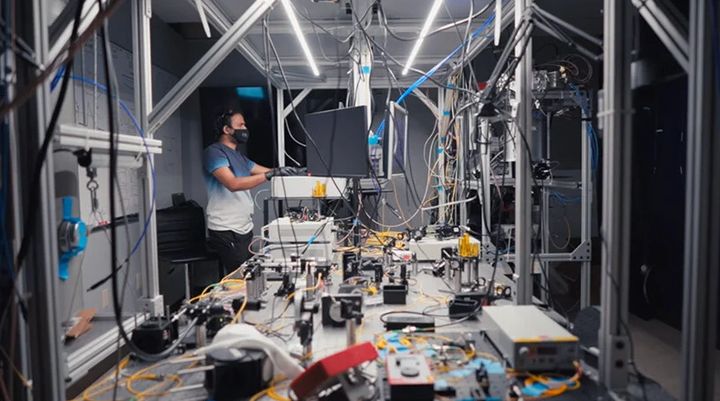Quantum Internet May Become a Fact After Latest Breakthrough
Researchers from the team working on intelligent quantum networks managed to discover a method of immediate long-distance transfer of information recorded in cubits - the smallest units of quantum information.
1

IN A NUTSHELL:
- Scientists have found a way to teleport information recorded in cubits;
- They used the so-called quantum entanglement phenomenon;
- The discovery may open the way to a breakthrough in communication technology.
Scientists have managed to make a breakthrough in research on so-called quantum teleportation. They have discovered a way to effectively, repeatably and immediately transfer the information recorded in cubits (the smallest and indivisible units of quantum information, which can be considered equivalent to bits) from one place to another, 44 kilometres away (via designboom).
The experiment was conducted within two networks - CQNET (Caltech Quantum Network) and FQNET (Fermilab Quantum Network) - based on fiber optic connection. The phenomenon of so-called quantum entanglement was used, i.e. a situation in which two cubits are connected with each other regardless of the place where they are located - a change made in one of them can be seen also in the other. In theory, this allows for immediate transmission - teleporting - of information stored in cubits over long distances, which opens the way to a revolution in the field of Internet technologies.

The experiment was part of the IN-Q-NET research program dedicated to intelligent quantum networks and related technologies. The team responsible for the project includes researchers from such entities and institutions as Fermilab, AT&T, Caltech, Harvard University, University of Calgary and NASA.
"We’re thrilled by these results. This is a key achievement on the way to building a technology that will redefine how we conduct global communication," said Panagiotis Spentzouris, Head of the Quantum Physics Research Program at Fermilab.
1
Latest News
- End of remote work and 60 hours a week. Demo of Naughty Dog's new game was born amid a crunch atmosphere
- She's the new Lara Croft, but she still lives in fear. Trauma after Perfect Dark changed the actress' approach to the industry
- „A lot has become lost in translation.” Swen Vincke suggests that the scandal surrounding Divinity is a big misunderstanding
- Stuck in development limbo for years, ARK 2 is now planned for 2028
- Few people know about it, but it's an RPG mixing Dark Souls and NieR that has received excellent reviews on Steam, and its first DLC will be released soon

